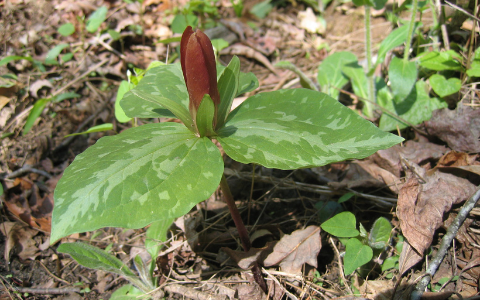2021 is a new year, and for us, that means new native plants. This year, our selection grows to 156 native plants. From sunny to shady and wet to dry, we have plants for every garden. When you’re selecting plants, choose various plants that bloom from spring to fall to provide interest all season long. A variety of plants also ensures nectar and pollen are available throughout the growing season. Don’t forget to purchase your plants early as we expect a busy season ahead.
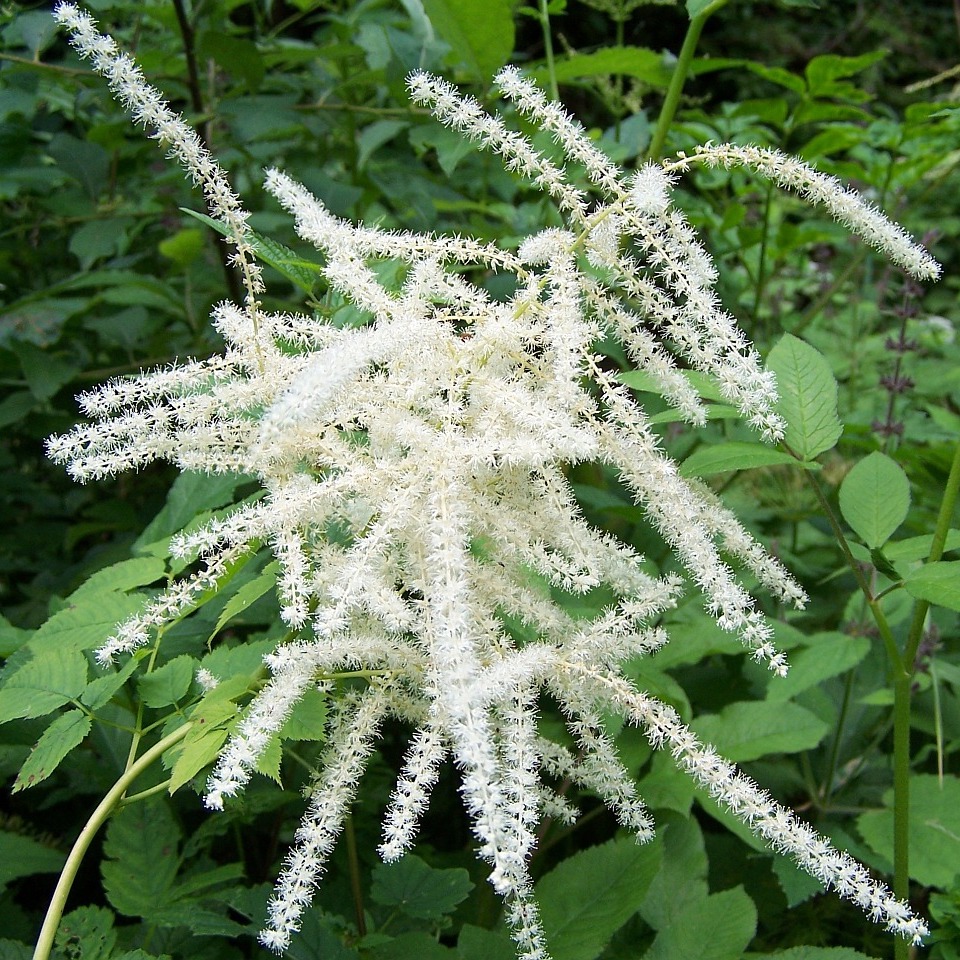
Goat’s Beard (Aruncus dioicus)
Aruncus dioicus, or Goat’s Beard, is a dioecious (separate male and female plants) perennial growing in moist woods, meadows, and along streams. Goat’s Beard is a very showy plant with tiny clusters of white flowers, growing 3 to 5 feet tall from June to July. Goat’s Beard is the larval host for the Dusky Azure butterfly.
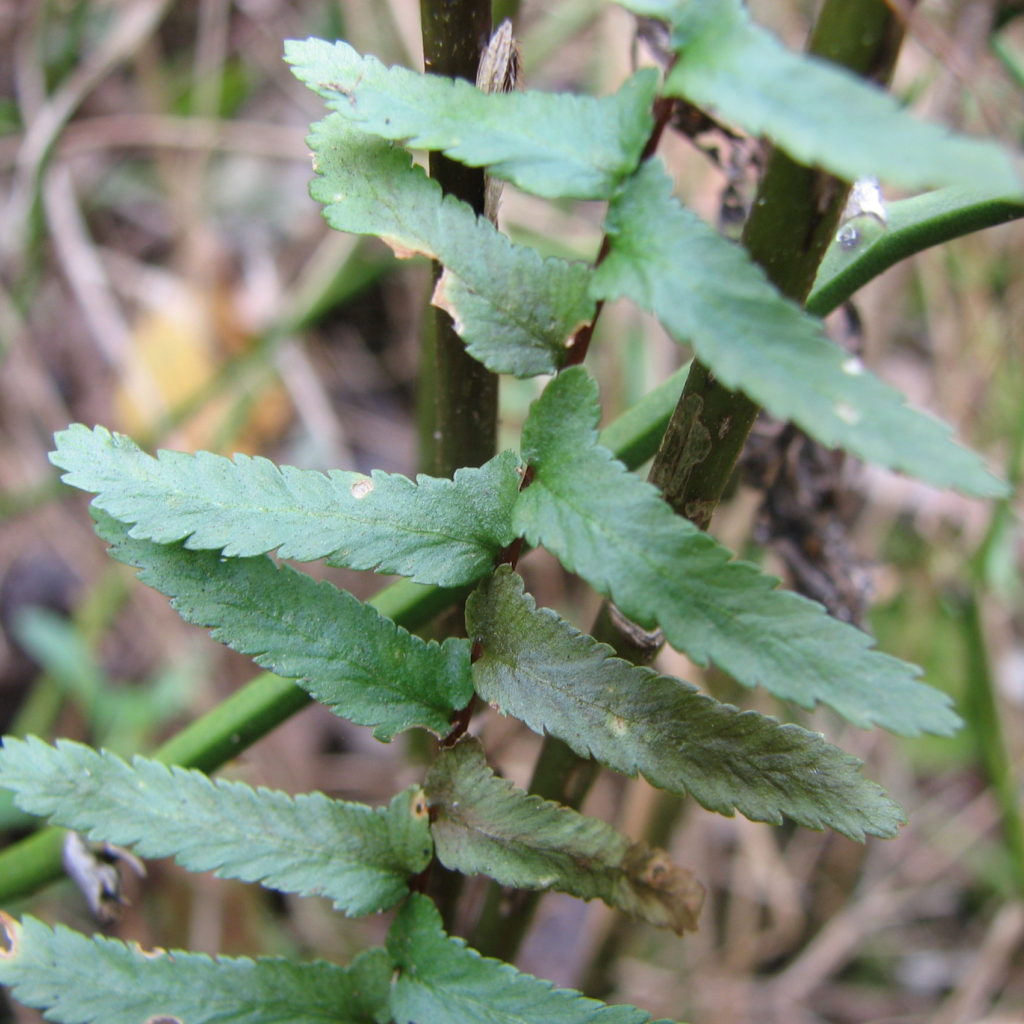
Ebony Spleenwort (Asplenium platyneuron)
Asplenium platyneuron, or Ebony Spleenwort, is an evergreen fern growing in medium yet well-drained locations. It can tolerate more sun than most ferns but prefers shade or semi-shade settings. The plant produces arching, pinnate, semi-glossy, dark green fronds.
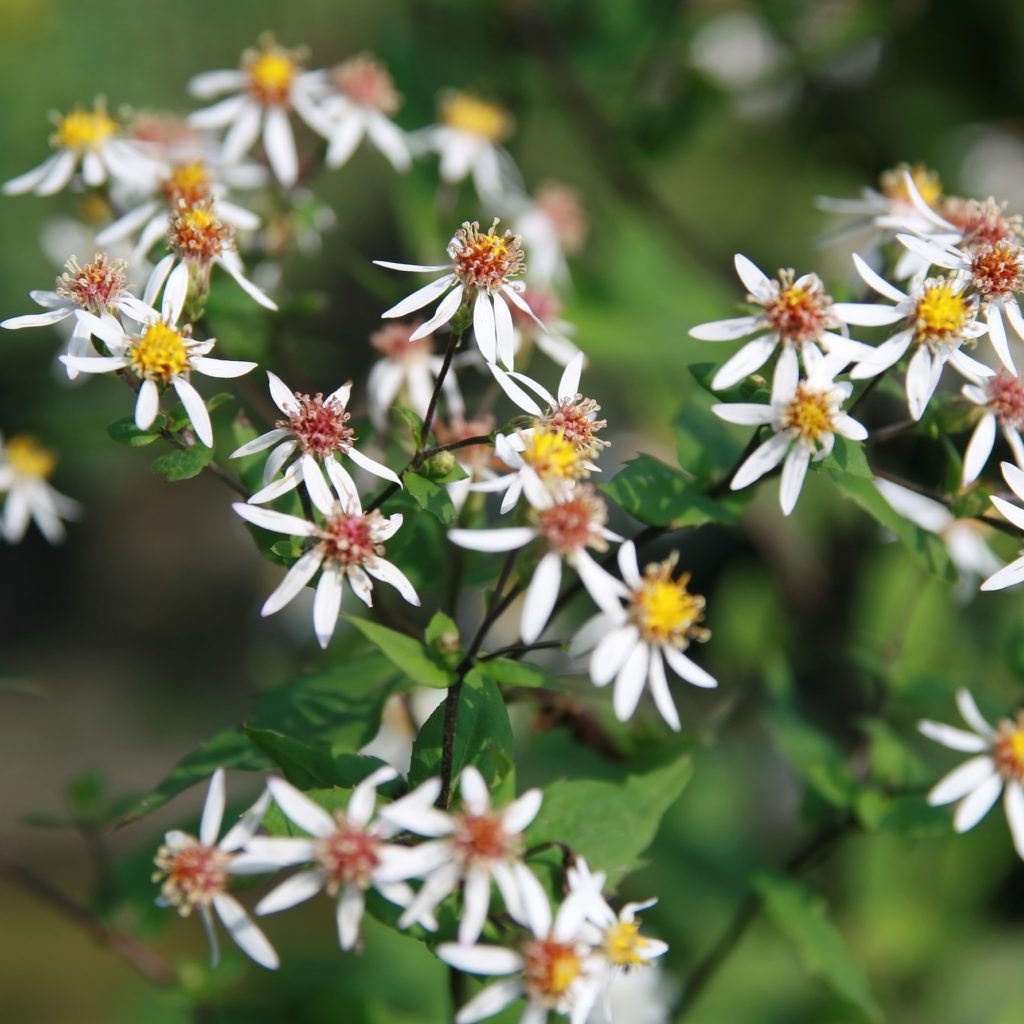
White Wood Aster (Aster divaricatus)
Aster divaricatus, or White Wood Aster, is a low mounding, rhizomatous perennial that is typically the first aster to bloom in late summer. White Wood Aster produces white ray flowers with light pink centers that are sure to brighten your shade garden. The plant also hosts the caterpillars of the Pearl Crescent and Checkerspot butterflies.
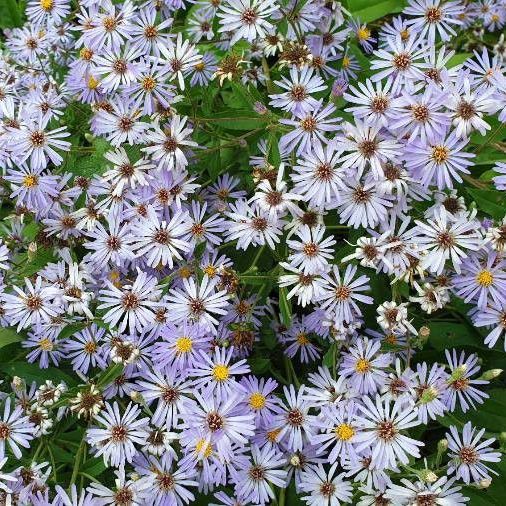
New York Aster (Aster novi-belgii)
Aster novi-belgii, or New York Aster, is a sturdy, clump-forming perennial with lance-shaped leaves and rings of purple or pink flowers surrounding yellow disc centers. New York Aster thrives in moist, well-drained soils and full to part sun. This aster hosts caterpillars of several different moths.
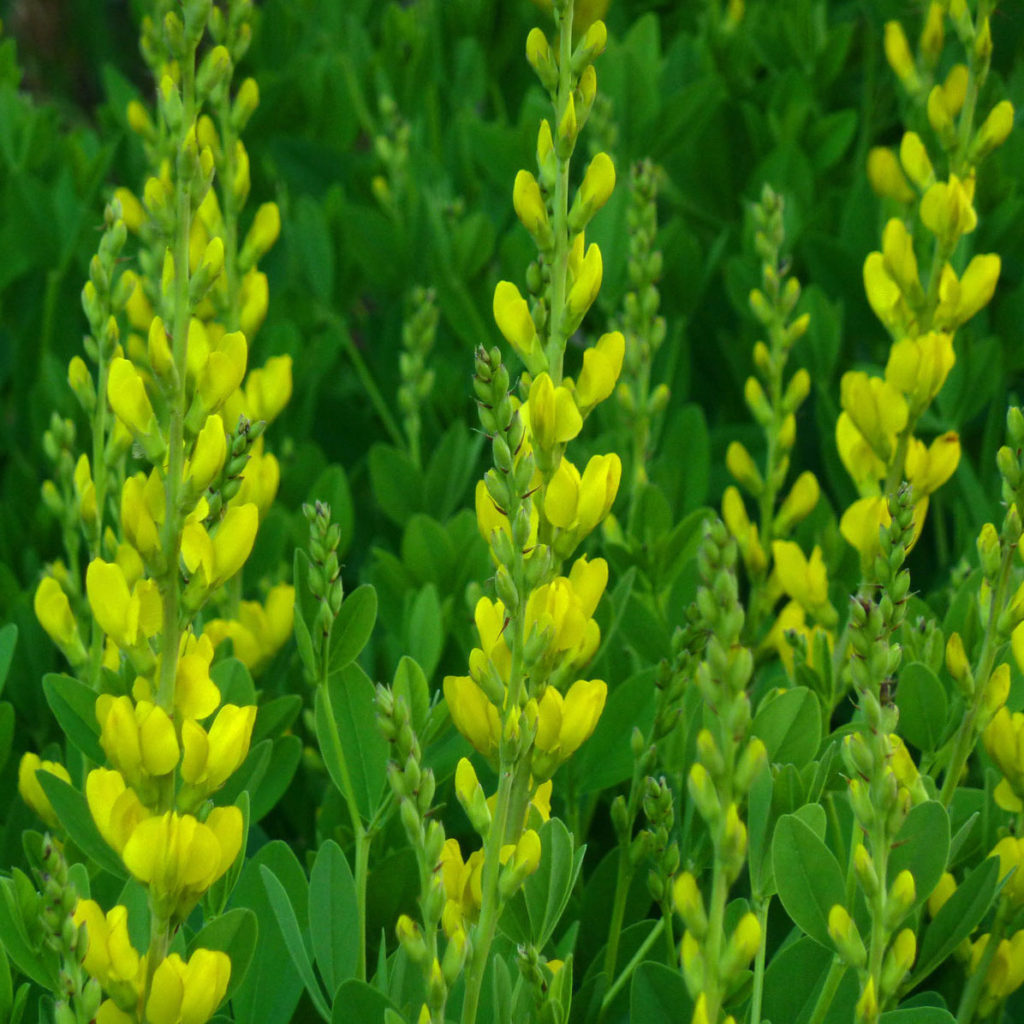
Yellow Wild Indigo (Baptisia tinctoria)
Baptisia tinctoria, or Yellow Wild Indigo, is a shrub-like perennial with silvery, gray-green leaves and bright pea-shaped flowers in late spring. The plant grows best in full sun or part sun. Yellow Wild Indigo is the host plant for the Wild Indigo Duskywing skipper and Clouded Sulphur butterfly.
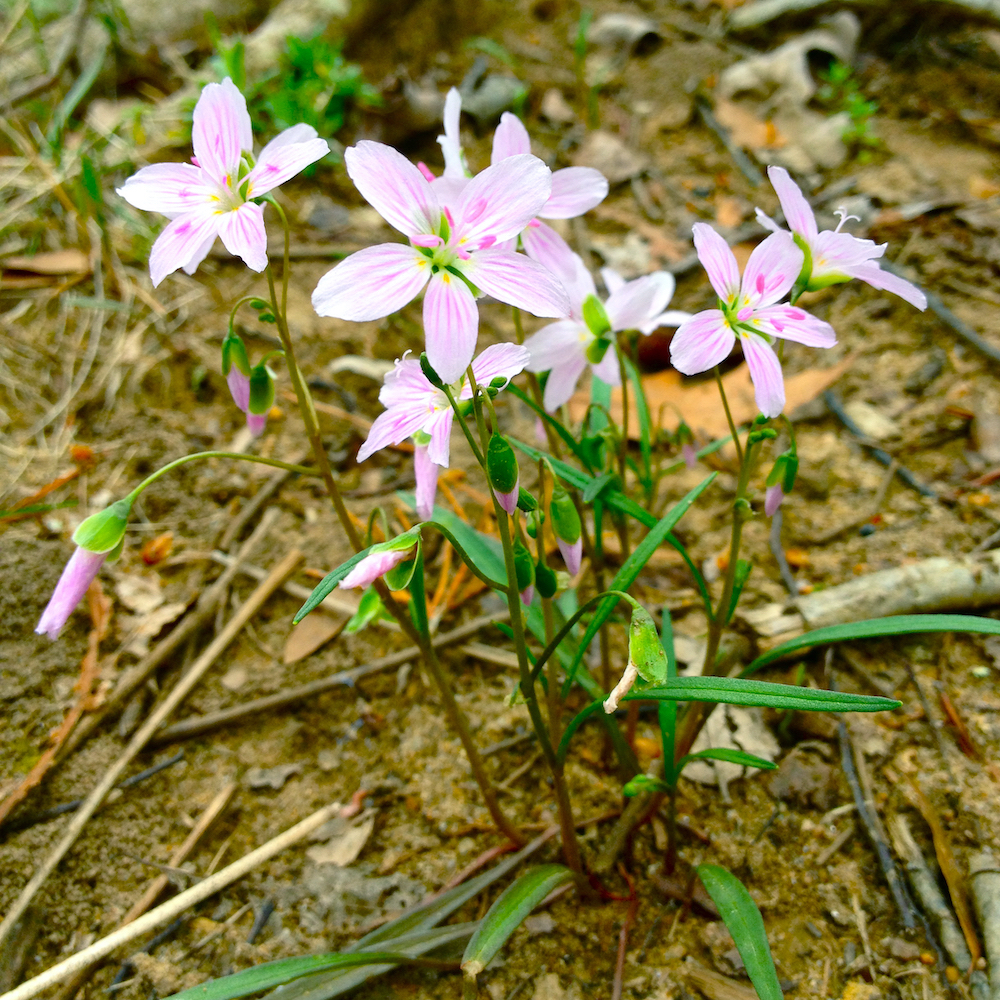
Spring Beauty (Claytonia virginica)
Claytonia virginica, or Spring Beauty, is an early flowering spring wildflower with five white or pink petals striped with darker pink veins. The small woodland plant is great for pollinators, attracting honeybees, bumblebees, carpenter bees, mason bees, and more. Spring Beauty can be naturalized in lawns in the same manner as spring crocus.
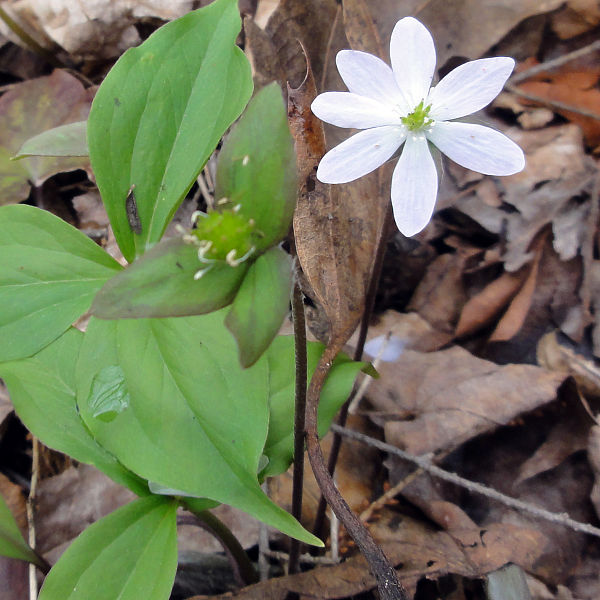
Sharp-Lobed Hepatica (Hepatica acutiloba)
Hepatica acutiloba, or Sharp-Lobed Hepatica, is an attractive wildflower found growing in open woods in early to mid-spring. The flowers are white, purple-blue, or pink in color with a round shape, and its leaves are distinctive and mottled, turning crimson in the fall. The appearance of the leaves resulted in another common name “Liverleaf” as they are shaped like the human liver.
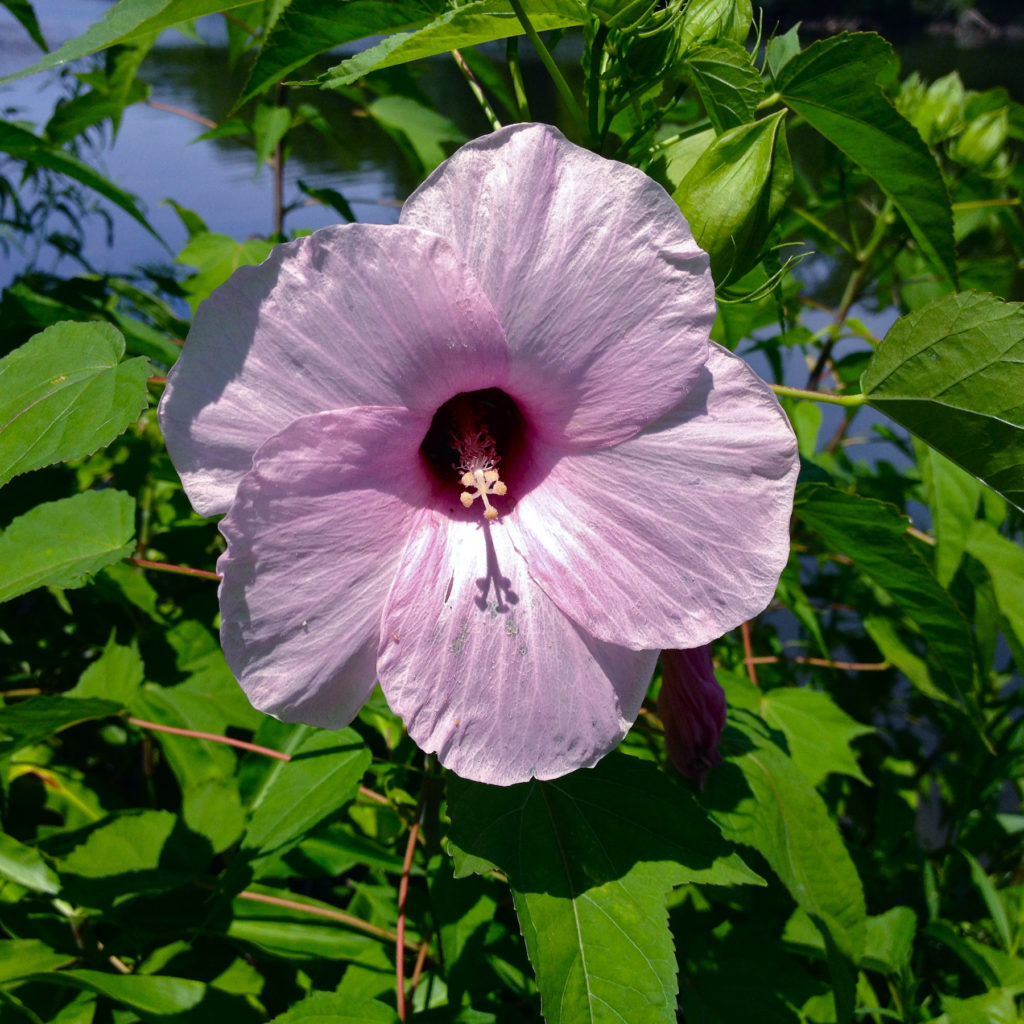
Rose Mallow (Hibiscus laevis)
Hibiscus laevis, or Rose Mallow, is a native of marshes and low-lying areas, producing large, showy pink flowers up to six inches in diameter. Rose Mallow makes a great addition to pond margins or areas with water features, as it prefers rich, moist soil. Rose Mallow is a relative of the Hollyhock and attracts butterflies with showy blossoms.
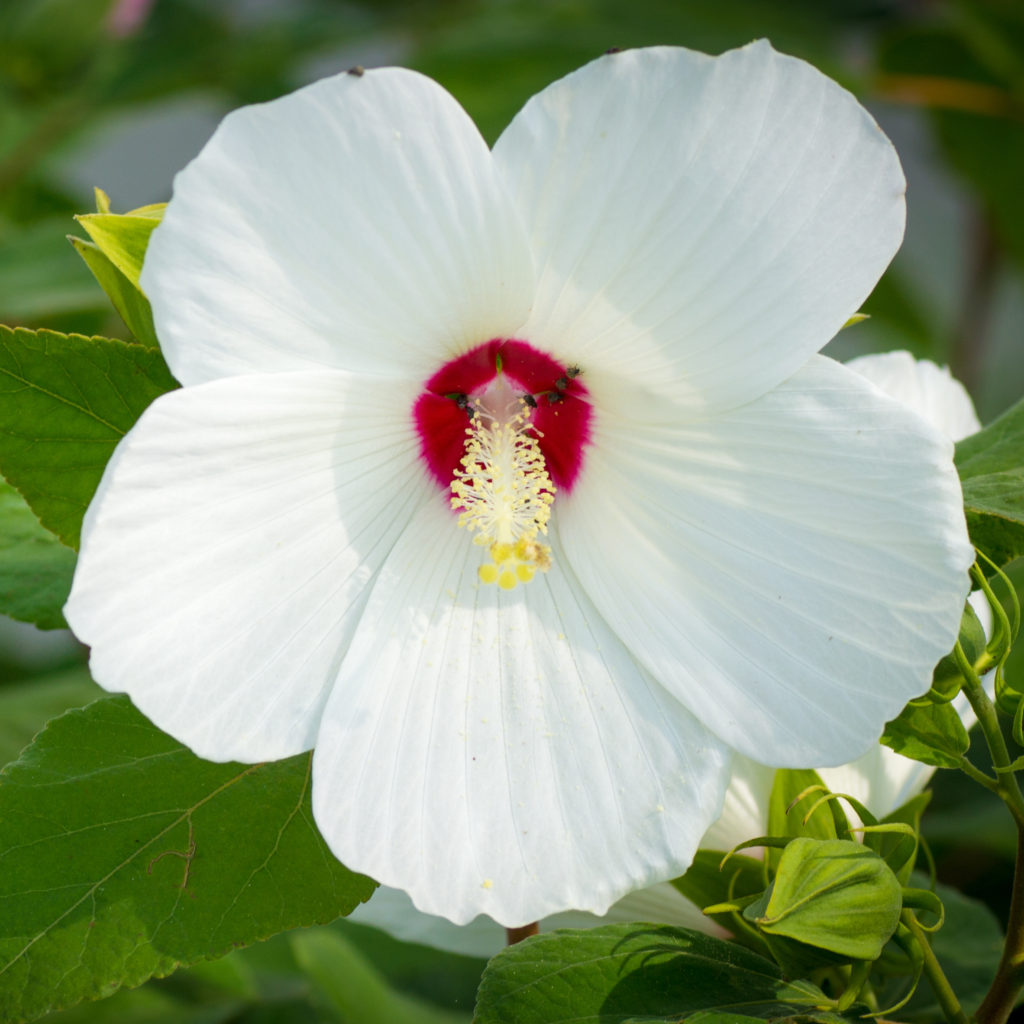
Swamp Rose Mallow (Hibiscus moscheutos)
Hibiscus moscheutos, or Swamp Rose Mallow, is a robust, attractive plant with large leaves and stunning white flowers with dark pink centers. Each exotic appearing bloom lasts a day, but they are produced repeatedly for about a month. Swamp Rose Mallow is great for late-summer, living fences, wetland edges, or rain gardens. The blooms are pollinated by long-tongued bees like the Rose Mallow bee and provide nectar to ruby-throated hummingbirds.
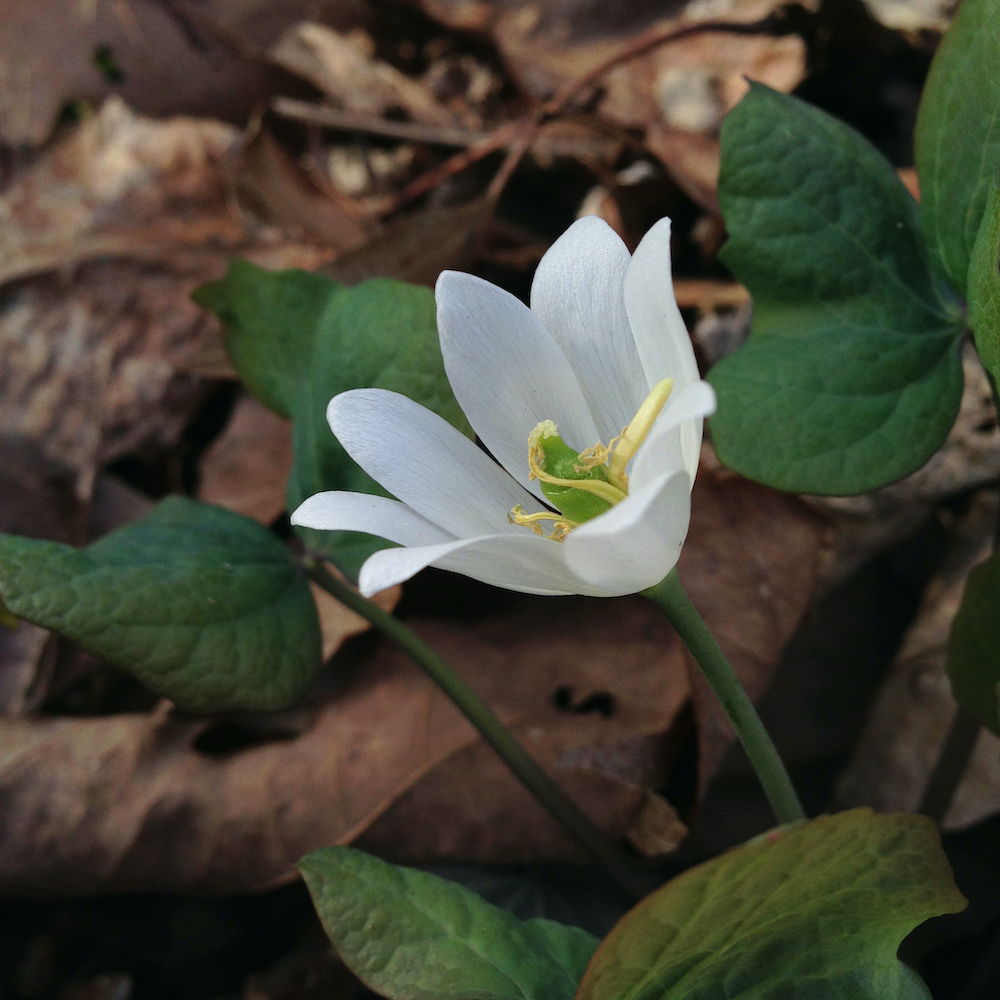
Twinleaf (Jeffersonia diphylla)
Jeffersonia diphylla, or Twinleaf, is an early spring wildflower with a single white, cup-shaped flower resembling Bloodroot. Twinleaf has long-stemmed leaves, divided into two lobes giving the appearance of two separate leaves, hence its common name. Twinleaf prefers well-drained, medium soil and the shade of hardwood forests. When massed, the foliage creates an effective groundcover in shady areas.
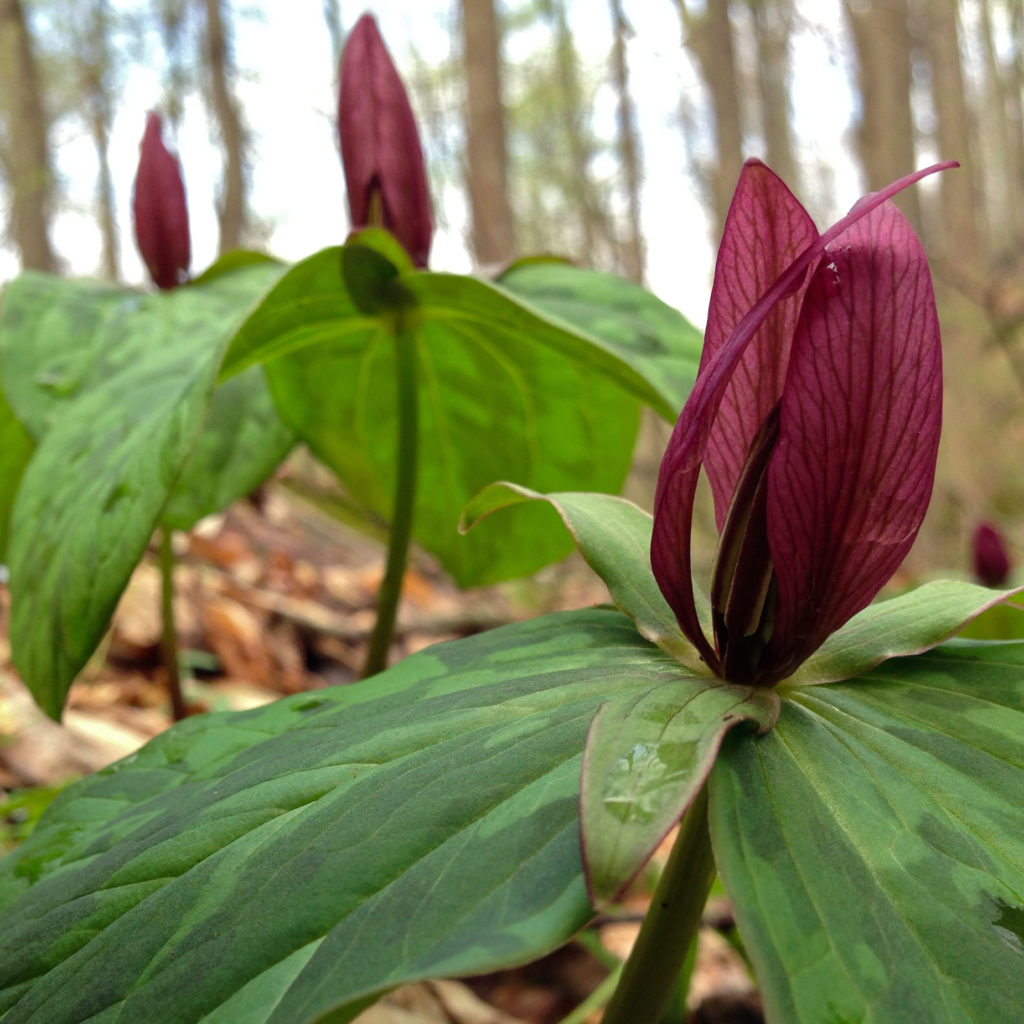
Red Toad (Trillium sessile)
Trillium sessile, or Red Toad, is a graceful spring perennial with a fragrant, deep red flower that never fully opens. The flower forms a spike and sits atop three gray-green mottled leaves, with the whole plant reaching a height of 12 inches. Red Toad prefers shaded, rich, well-drained soil that remains moist. The clump-forming plant makes an attention-grabbing addition to your shady woodland garden.
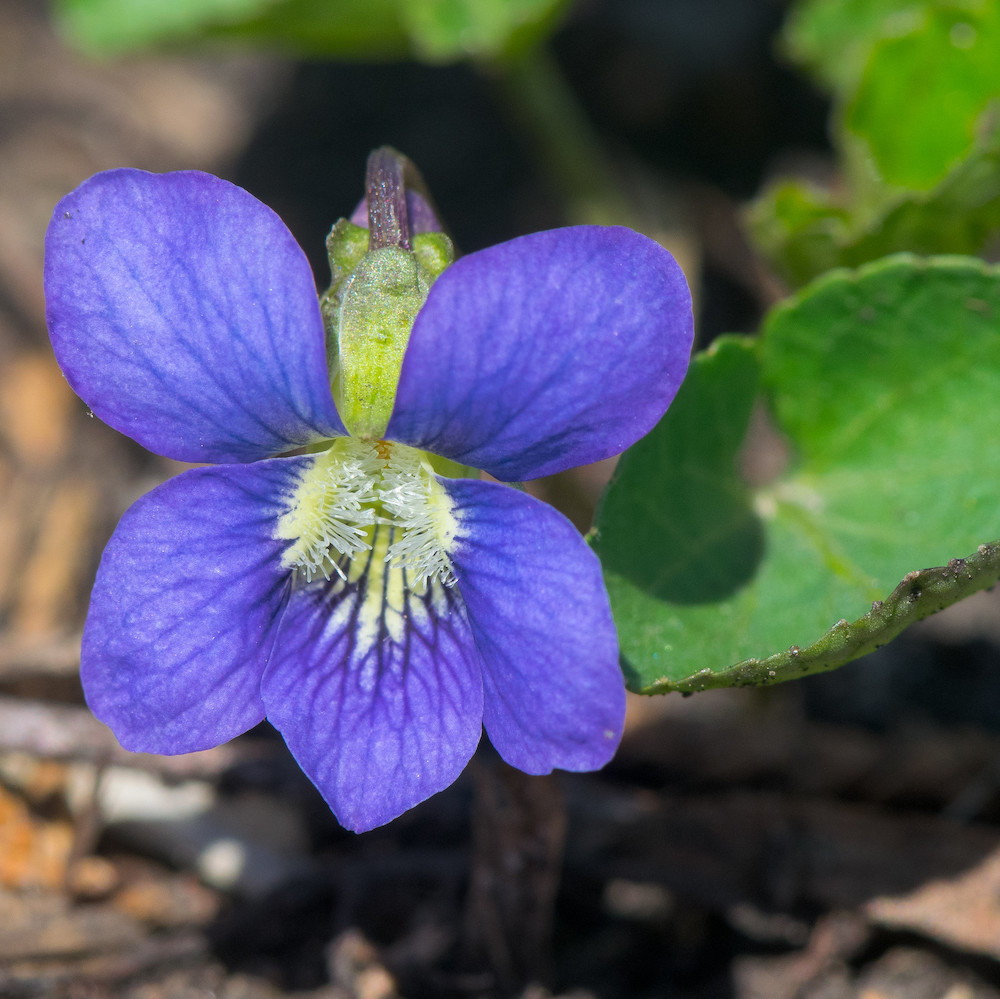
Meadow Blue Violet (Viola sororia)
Viola sororia, or Meadow Blue Violet, is a low-growing, groundcover perennial with leaves and flowers that grow directly from rhizomes. In spring, 1″ blue-violet blooms appear with five petals. Meadow Blue Violet grows best in medium soils and part sun to full sun sites. It makes an excellent groundcover and offers an early nectar source to bees and other pollinators. Caterpillars of various Fritillary butterflies feed on the foliage.
Check out these other native plants we’re excited about in 2021:
- Paw Paw (Asimina triloba)
- Cream Gentian (Gentiana flavida)
- Golden Ragwort (Packera aurea)
- Prairie Phlox (Phlox pilosa)
- Wild Indian Physic (Porteranthus stipulatus)
Note: Some plants on this list, such as Rose Mallow, Swamp Rose Mallow, Cream Gentian, etc. will not be available until later in the season.


